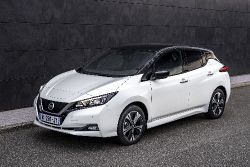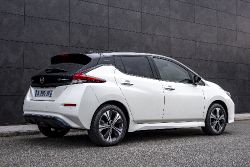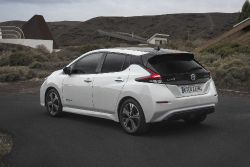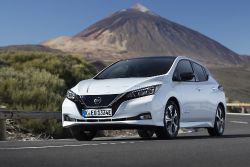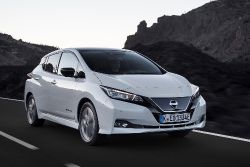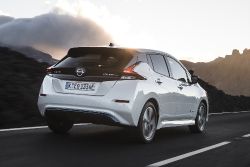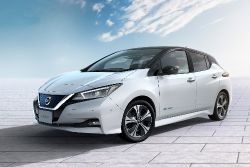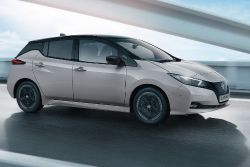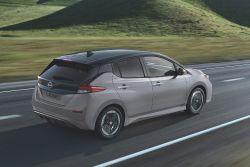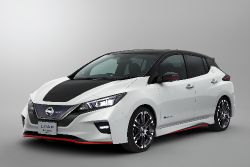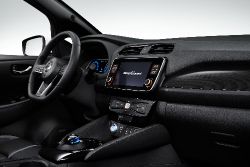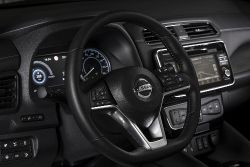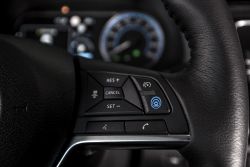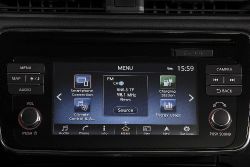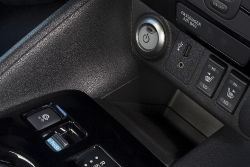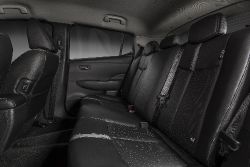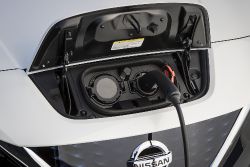Choose a car
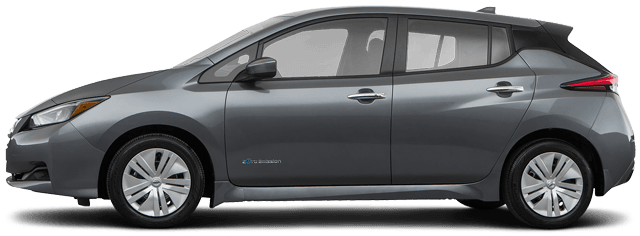
My Comparison Table:
Nissan Leaf e+ 62 kWh Tech Specs
other variants:
Nissan Leaf e+ 62 kWh - Prices
| Base Price (MSRP) | Destination Charge | Effective Price |
|---|---|---|
| $36,040 | $1,095 | $37,135 |
| On The Road Price |
|---|
| £34,945 |
| Preis inkl. MwSt. |
|---|
| 41.100 € |
Battery Capacity Gross/Useable 62/56 kWh
Nissan Leaf e+ 62 kWh - Performance Specs
Nissan Leaf e+ 62 kWh - Official Range and Energy Consumption (Combined)
- WLTP Range (TEL*): compare 385 km 239.2 mi
- WLTP Consumption (TEL*): compare 18.5 kWh/100 km 29.8 kWh/100 mi
- Petrol/Gasoline equivalent: 2.08 l/100 km 113.2 MPGe
* TEL (Test Energy Low) indicates the lowest values (most economical) with the lightest set of options
TEH (Test Energy High) indicates the highest values (least economical) with the heaviest set of options
Nissan Leaf e+ 62 kWh - Battery
Nissan Leaf e+ 62 kWh - Dimensions and Weights
- Body Type: Hatchback
- Length: compare 4490 mm 176.77 in
- Width: compare 1788 mm 70.39 in
- Height: compare 1540 mm 60.63 in
- Wheelbase: 2700 mm 106.3 in
- Weight: compare 1685 kg 3715 lbs
- Max Payload: 380 kg 838 lbs
- Trunk / Boot Space: compare 385 l 13.6 ft3
- Trunk / Boot Space Max: 1176 l 41.5 ft3
- Frunk Space: comparedoesn't have a frunk
- Max Roof Load: 35 kg 77 lbs
- Ground Clearance: compare 142 mm 5.59 in
- Min Turning Circle (curb-curb): compare 10.85 m 35.6 ft
- Tire Standard: 215/50 R17
- Seats max.: 5
Nissan Leaf e+ 62 kWh - Charging
- AC On-Board Charger Standard: 6.6 kW
- DC Fast Charging: compare 100 kW
- DC Charge Port: CHAdeMO
- Charge Port Location: Front Side Middle
Nissan Leaf e+ 62 kWh - AC Charging Times (home, work, hotel)
Select State of Charge (SOC):
The maximum on-board charger power of the Nissan Leaf e+ 62 kWh is 6.6 kW.
All figures in the table above are assumed approximate values under optimal conditions.
Nissan Leaf e+ 62 kWh - DC Fast Charging Times
Select State of Charge (SOC):
The maximum fast charging power of the Nissan Leaf e+ 62 kWh is 100 kW.
All figures in the table above are assumed approximate values under optimal conditions.
Nissan Leaf e+ 62 kWh - Others
- Platform: Leaf
- Dedicated EV Platform: Yes
- Drag Coefficient Cd: compare 0.29
Nissan Leaf - Interior And Exterior Photos
Nissan Leaf - Safety - Crash Tests
-
Euro NCAP see results 5 stars
-
NHTSA see results 0 stars
-
IIHS see results
Žádné video
Compare the parameters of all the Nissan Leaf variants
- Battery type
- Battery - gross
- Battery - usable
- AC charge power
- DC charge power
- Charge port location
- Max range WLTP
- Consumption WLTP
- Acceleration 0-100 km/h
- Acceleration 0-60 mph
- Quarter mile
- Top speed
- Power
- Torque
- Length
- Width
- Height
- Wheelbase
- Weight
- Trunk / Boot Space
- Frunk Space
- Turning circle
- Driven axles
- Platform
- Drag coefficient Cd
- Ground clearance
- Max Towing Capacity
The technical information on this page are used from official data provided by the car companies and figures measured by our editorial staff and/or other independent persons. For further details, please visit the manufacturer's website.
If you think any of the information is wrong, please let us know.
